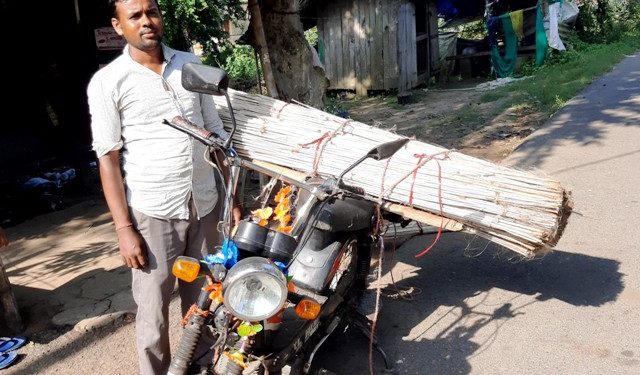Aradi: It has been a tradition for Odias to burn bundles of jute stick, locally known as ‘kaunria kathi’ to invoke their forefathers on occasion of Deepavali.
But the tradition is slowly losing its sheen as jute sticks are no longer available as abundantly as they used to be few years ago.
Once upon a time, jute was widely grown in Aradi and its nearby areas in Bhadrak district. These days, Jute cultivation is nearly nonexistent. When asked what has made the farmers to turn their faces away from growing jute, some farmers here attributed it to decrease in demand.
That said, on occasion of Deepavali, jute sticks are in high demand. However, these specific sticks are not available here anymore. Traders here have been selling these sticks after procuring from other places. A bundle of only four to five sticks sell for Rs 10.
According to nonagenarian Duryodhan Biswal and lecturer Dillip Mohanty, ‘kaunria’ stick is sign of piousness. Due to lack of marketing facilities, the farmers here have lost their interest in jute farming and this has adversely affected our tradition as well, they say.
After jute harvesting, the sticks which remain in the agricultural land are used in the Deepavali festival as ‘kaunria kathi’ and ‘pimpeaikhadi’ in Bhadrak.
The eco-friendly jute bags, gunnysacks and mats are made out of jute fibre. Jute fibre comes from the stem and ribbon (outer skin) of the jute plant. The fibres are first extracted by a process called retting. Retting consists of bundling stems together and immersing them in slow running water. After retting, the non-fibrous material is scraped off and workers pull the crucial fibres from the jute stem.
Jute cultivation is a labour intensive job as is jute harvesting. The farmers are increasingly losing interest in jute farming because of decreasing profitability and insufficient marketing facilities. Lack of government support is another disincentive for jute farmers, locals say.






































